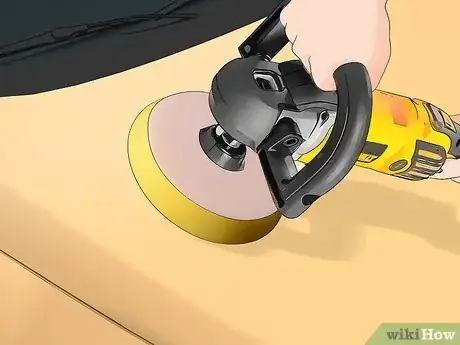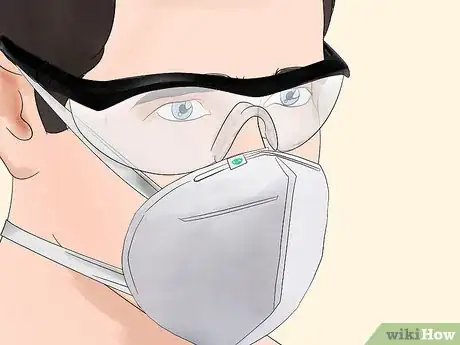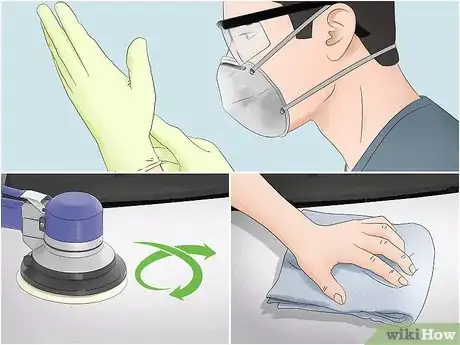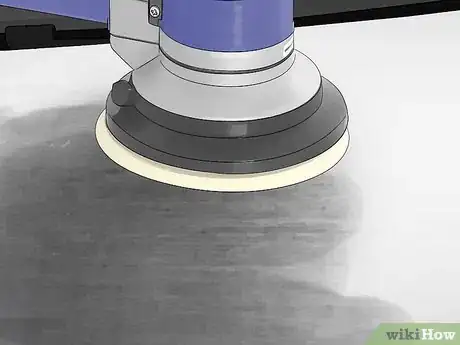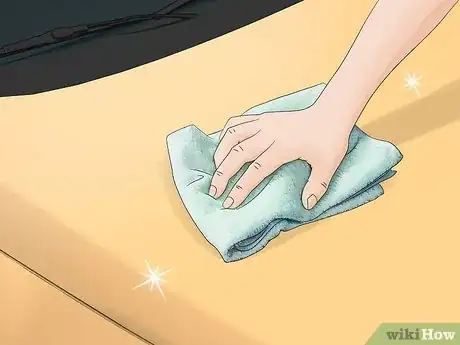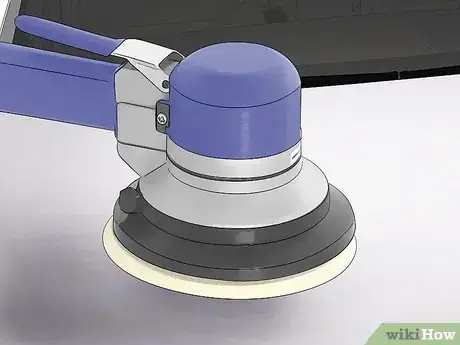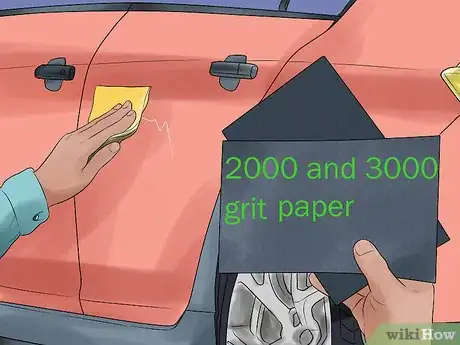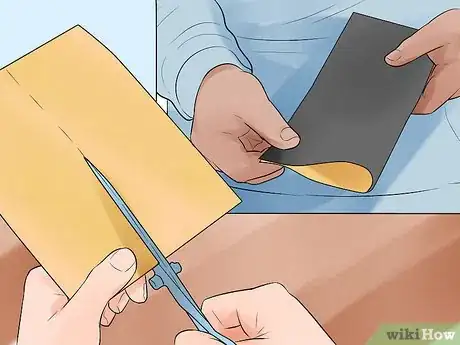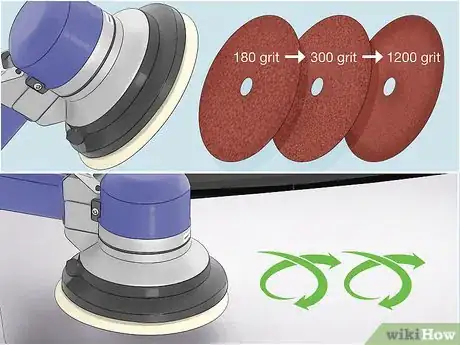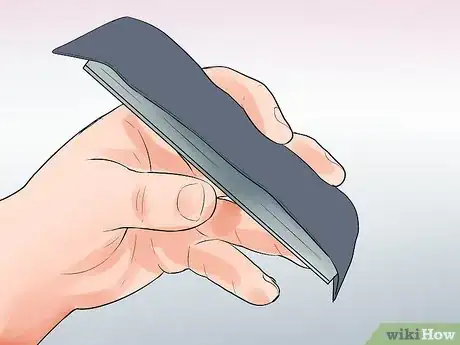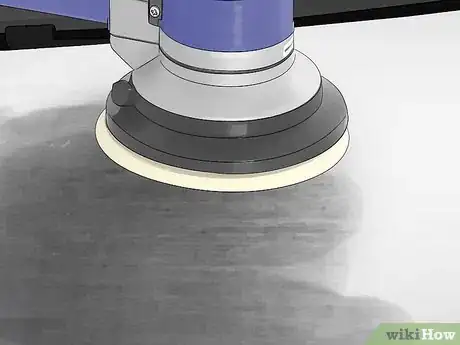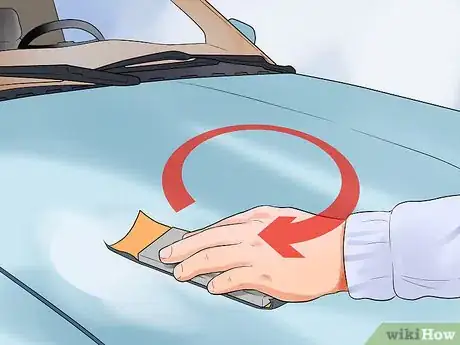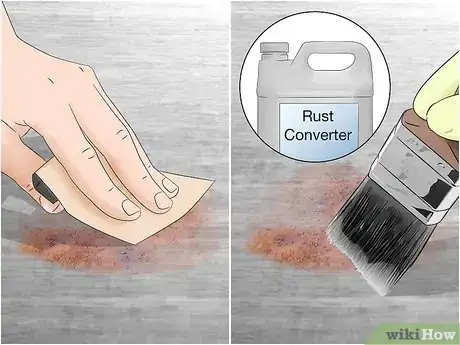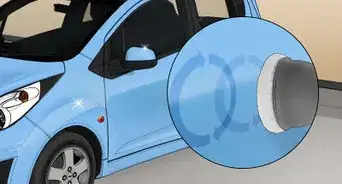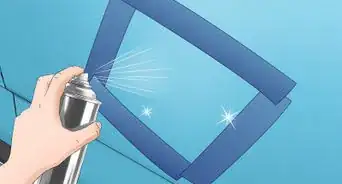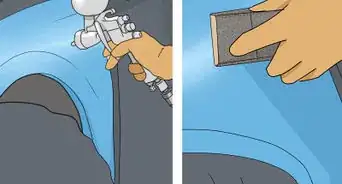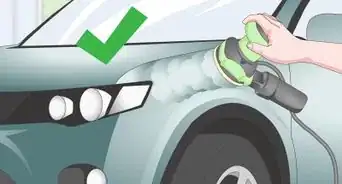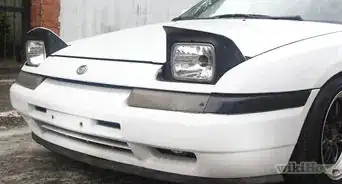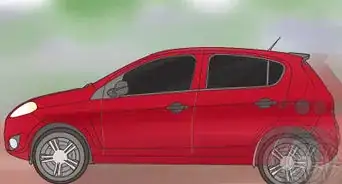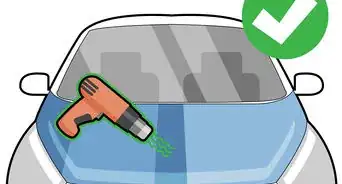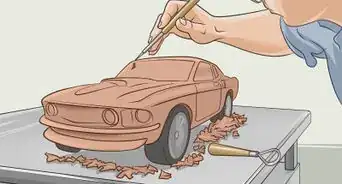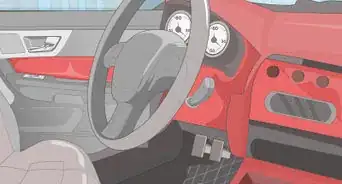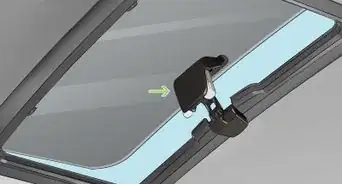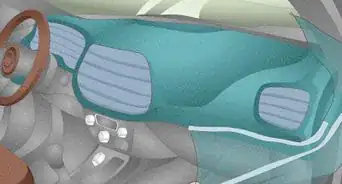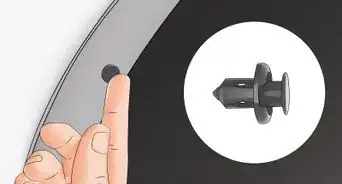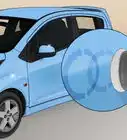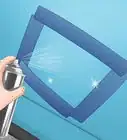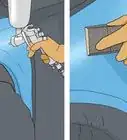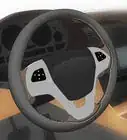This article was co-authored by Charlie Payne and by wikiHow staff writer, Hannah Madden. Charlie Payne is an Auto Repair Expert and the Owner & Operator of Perfect Reflections Auto Body. With over 21 years of experience, he specializes in auto restorations and collision repairs. Charlie is PPG and DuPont certified and earned a Bachelor's Degree from Liberty University.
There are 8 references cited in this article, which can be found at the bottom of the page.
This article has been viewed 96,881 times.
If your car’s paint job is looking a little tired or worn-in, you might be thinking about repainting your car on your own. Sanding your car is a super important first step—without it, your new paint job probably won’t look silky and smooth. Set aside an afternoon and spend a few hours sanding your car for a new paint job that looks like it was done by a professional.
Things You Should Know
- If the old paint on your car is solid and uncracked, you don't need to sand before repainting. Just add a coat of primer before applying the new paint.
- If you do need to sand your car, use a power sander.
- Go over your car once with 180-grit sandpaper, then again with 300-grit sandpaper.
- Finally, wet sand your car with 1200-2000 grit sandpaper for a smooth finish.
Steps
What’s the best method for sanding a car?
-
1Wear a mask, gloves, and goggles for safety. Sanding creates a lot of fine dust particles that can irritate your lungs, eyes, and skin. Before you start sanding, put on your protective equipment and keep it on until you’re finished.[3]
- If you’re worried about getting particles in your car or your home, wear overalls over your clothes, then take them off and wash them.
-
2Move your power sander in small, smooth and circular motions. Attach your sandpaper to the power sander and turn it on. Press it up against your car as hard as you can, and move it in small circles across the entire panel.[4]
- Do your best to make even motions and to avoid staying in a certain pattern too long, or you might end up staying in a rut.
-
3Work one panel at a time for an even sanding. You can separate the car into different panels: the doors, the roof, the hood, the trunk, the bumper, and the fender. In total, each panel will probably take about 2 hours to sand down completely.[5]
- It might sound like a long time, but it’s totally worth it for a new, smooth paint job.
-
4Wipe your car off with a damp cloth before priming and painting. Sanding generates a lot of dust, which can get stuck in automotive paint and primer. Before you move on, use a damp cloth to wipe down the outside of your car.[6]
- If you’re super worried about dust, use paint thinners to wipe down the outside of your car. Wait for the thinners to evaporate before you move onto priming.
What kind of sander should you use to sand a car?
-
1Use a power sander for the majority of your car. A power sander will be way easier to use than hand sanding your entire car. Use this tool on the large, flat surfaces of your vehicle, like the doors, roof, trunk, and hood.[7]
- You can buy a power sander from most hardware stores for around $40.
-
2Hand sand small cracks and crevices in your car. The corners of doors, underside of the body, and the small cracks in between door handles can be tough to reach with a power sander. Keep a few sheets of loose sandpaper around so you can sand down these areas by hand.[8]
- To make hand sanding easier, staple a piece of sandpaper to a block of wood so it’s easier to hold onto.
What grit sandpaper should you use to sand a car?
-
1Start with a 180-grit sandpaper. This will roughly take off the outermost layer of paint and primer. You might notice that it looks a little scratched and rough at this point, but that’s okay.[9]
-
2Go over the paint again with 300-grit sandpaper. This sandpaper is a little smoother, and it will help remove some of the scratches that the previous sandpaper left behind. Your car won’t look perfect at this point, but that’s all right.[10]
-
3Finish with 1200- to 2000-grit wet-to-dry sandpaper. This will give your car the silky smooth finish that it needs for your new coat of paint. Soak your wet-to-dry sandpaper in water overnight, then use it like you normally would over your entire car.[11]
- It’s super important to soak your wet-to-dry sandpaper before you use it. Using wet-to-dry sandpaper while it’s dry can scratch your car.
- Using wet-to-dry sandpaper will give your car a smoother finish than typical sandpaper will.
How do you deal with rust on your car?
-
1Sand it down with 40- to 50-grit sandpaper to start. You can hand sand or use a power sander, depending on where the rust is. Use your sandpaper to strip off the rust and the surrounding paint until you can see bare metal poking through.[13]
- This method works well for surface rust, or rust that hasn’t penetrated all the way through the body of your car. If your car has holes in it from rust, take it to a professional.
-
2Add 2 layers of rust converter to the area before you paint. Put on a pair of rubber gloves and use a brush or a sponge to apply a thin layer of rust converter where the rust used to be. Wait 15 to 30 minutes for the product to dry, then add a second layer. Wait for the second layer to dry all the way before you start painting your car.[14]
- Rust converters contain chemicals that react with the rust and convert it into a harmless compound that won’t hurt your car.
- You can find rust converters at most auto body shops.
Community Q&A
-
QuestionHow long after painting do I apply clear coat?
 Community AnswerI usually paint onto a strip of scrap metal that's primed - that way I have another piece to touch and feel how the paint feels without touching the car. Once its dry, (about 24 hours), hit it with some super fine SP and spray it down with the clear coat.
Community AnswerI usually paint onto a strip of scrap metal that's primed - that way I have another piece to touch and feel how the paint feels without touching the car. Once its dry, (about 24 hours), hit it with some super fine SP and spray it down with the clear coat.
Warnings
- Read the manual for your power sander before you use it.⧼thumbs_response⧽
References
- ↑ https://www.youtube.com/watch?t=17&v=Hc6ycADb8Mw&feature=youtu.be
- ↑ https://www.youtube.com/watch?t=25&v=Hc6ycADb8Mw&feature=youtu.be
- ↑ https://medicine.yale.edu/intmed/prep/worker/protection/surface/
- ↑ https://www.themechanicdoctor.com/find-car-paint-code/
- ↑ https://www.themechanicdoctor.com/find-car-paint-code/
- ↑ https://www.popularmechanics.com/cars/how-to/a3110/a-diy-guide-to-painting-your-car-15998013/
- ↑ https://www.popularmechanics.com/cars/how-to/a3110/a-diy-guide-to-painting-your-car-15998013/
- ↑ https://www.popularmechanics.com/cars/how-to/a3110/a-diy-guide-to-painting-your-car-15998013/
- ↑ http://www.superstreetonline.com/how-to/paint-body/1307-prepping-and-painting-your-car-part-2/
- ↑ http://www.superstreetonline.com/how-to/paint-body/1307-prepping-and-painting-your-car-part-2/
- ↑ https://www.themechanicdoctor.com/find-car-paint-code/
- ↑ https://www.themechanicdoctor.com/find-car-paint-code/
- ↑ https://www.readersdigest.ca/cars/maintenance/how-fix-rust-your-car/
- ↑ https://www.popularmechanics.com/cars/how-to/a3084/how-to-fight-rust-and-win-14930616/
